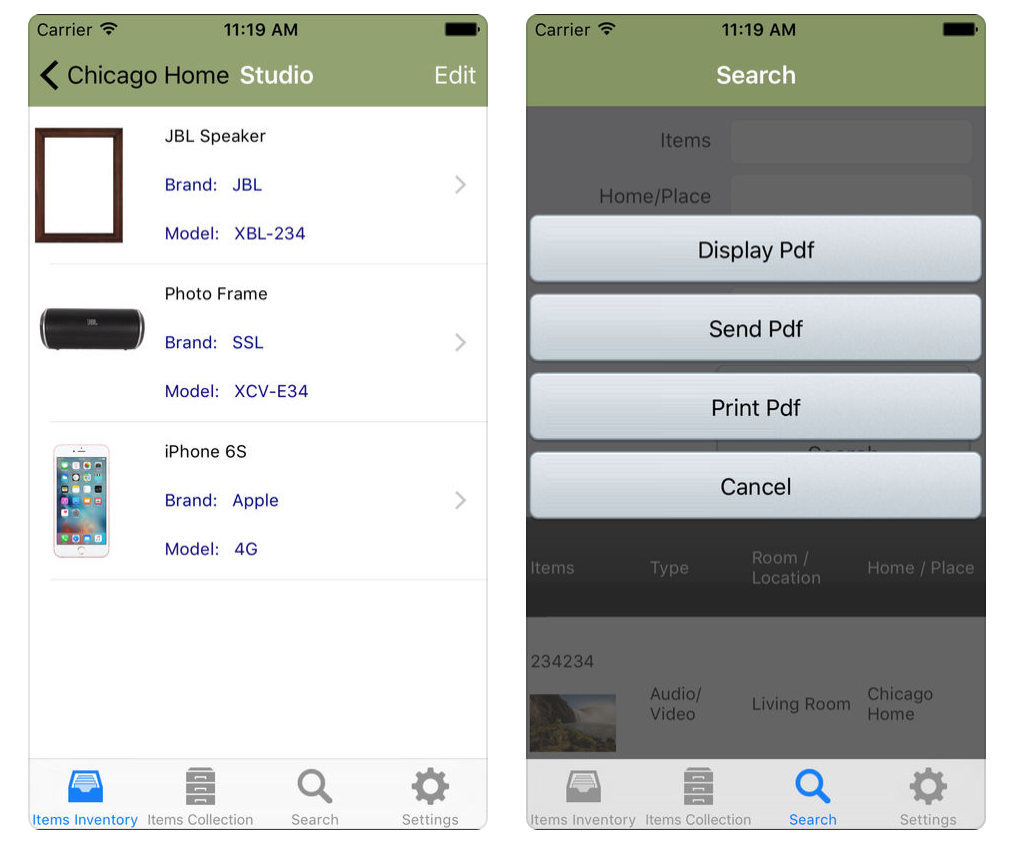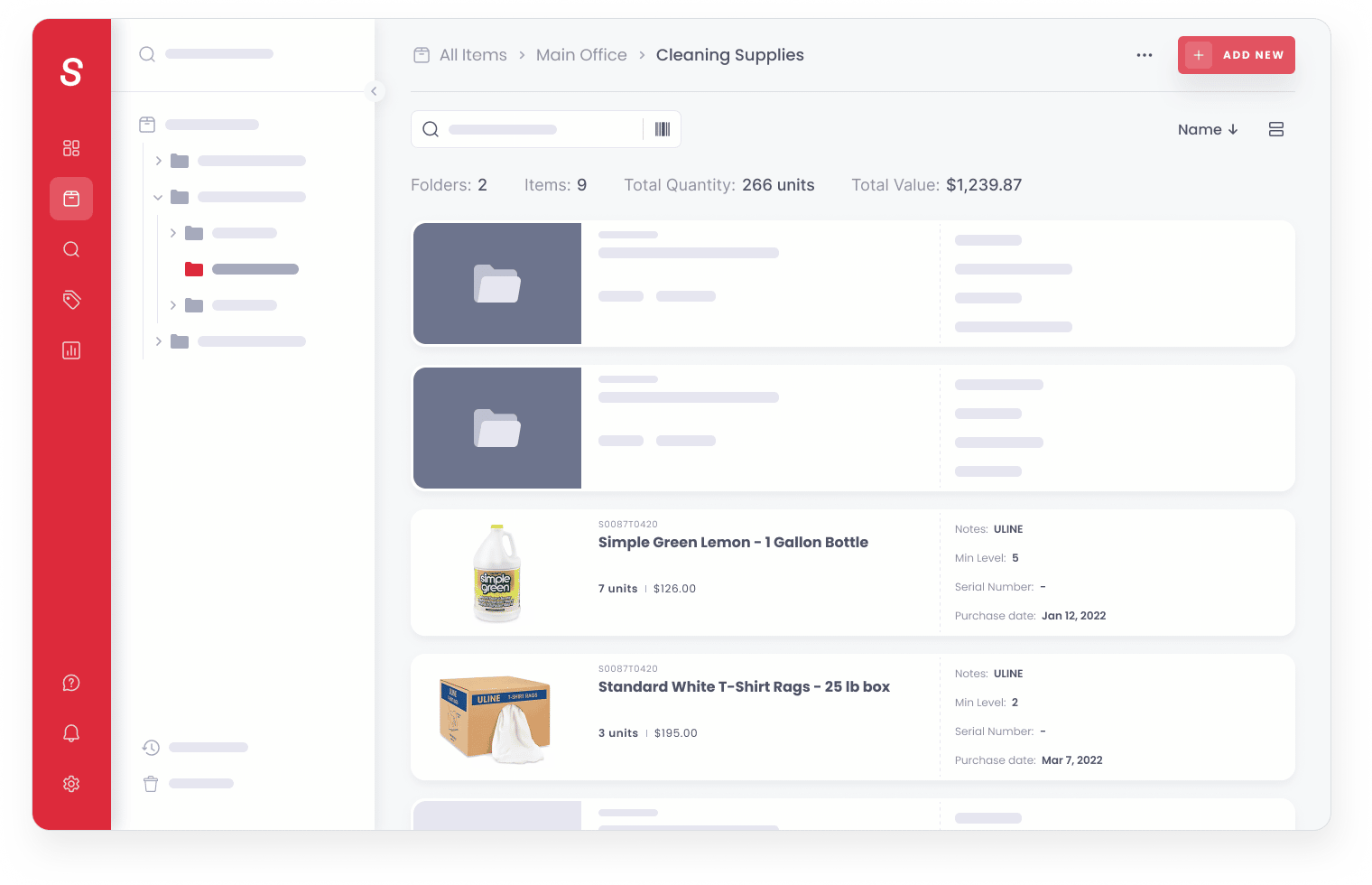Business inventory app for mac – Embark on a journey into the realm of business inventory apps for Mac, where efficiency and precision converge. These indispensable tools empower businesses to optimize their inventory management, unlocking a world of benefits and revolutionizing the way they operate.
From cloud-based solutions to industry-specific offerings, business inventory apps for Mac cater to a diverse range of needs. Their robust feature sets, including inventory management, stock tracking, and purchase order management, provide businesses with unparalleled control over their inventory.
Overview of Business Inventory Apps for Mac

Business inventory apps for Mac are designed to help businesses manage their inventory, track stock levels, and optimize their supply chain. These apps offer a range of features to streamline inventory management, improve accuracy, and enhance overall efficiency.
The history of business inventory apps for Mac can be traced back to the early days of personal computing. In the 1980s, businesses began using spreadsheet programs to track inventory. As technology advanced, dedicated inventory management software was developed to meet the specific needs of businesses.
Key Features and Functionalities
Business inventory apps for Mac typically offer a range of key features and functionalities, including:
- Inventory tracking: Track stock levels, locations, and movement.
- Product management: Create and manage product catalogs, including product descriptions, images, and pricing.
- Order management: Process orders, track shipments, and manage customer orders.
- Reporting and analytics: Generate reports and insights to analyze inventory performance and identify trends.
- Integration with other systems: Integrate with accounting software, e-commerce platforms, and other business systems.
Types of Business Inventory Apps for Mac
Business inventory apps for Mac come in various types, each tailored to specific needs and preferences. Here are some common categories:
Cloud-Based Apps
- Hosted on remote servers, accessible via the internet
- Eliminate the need for local storage and maintenance
- Offer real-time data synchronization and collaboration
On-Premise Apps
- Installed and run on the user’s local computer or server
- Provide greater control over data security and privacy
- May require additional hardware and IT resources
Mobile-First Apps
- Designed primarily for use on smartphones and tablets
- Offer convenience and flexibility for on-the-go inventory management
- May have limited functionality compared to desktop apps
Industry-Specific Apps
- Tailored to the specific requirements of particular industries
- Provide specialized features and integrations
- May be more expensive than general-purpose apps
Features and Functionalities of Business Inventory Apps for Mac
Business inventory apps for Mac offer a comprehensive suite of features and functionalities designed to streamline inventory management processes and enhance operational efficiency. These apps typically include:
Inventory Management
Inventory management is the core functionality of these apps. They allow businesses to track and manage their inventory levels in real-time, ensuring accurate and up-to-date information on stock availability.
Stock Tracking
Stock tracking features enable businesses to monitor the movement of inventory items throughout the supply chain. This includes tracking stock levels at different locations, such as warehouses, retail stores, and distribution centers.
Purchase Order Management
Purchase order management functionality helps businesses streamline the procurement process. These apps allow businesses to create, send, and track purchase orders, ensuring timely delivery of inventory items.
Reporting and Analytics
Reporting and analytics features provide businesses with valuable insights into their inventory performance. These apps generate reports that summarize inventory levels, stock turnover rates, and other key metrics, helping businesses make informed decisions.
Integrations with Other Business Systems
Business inventory apps for Mac often integrate with other business systems, such as accounting software, e-commerce platforms, and CRM systems. This integration enables seamless data exchange and eliminates the need for manual data entry, reducing errors and improving efficiency.
Benefits of Using Business Inventory Apps for Mac
Business inventory apps for Mac offer a wide range of benefits that can help businesses improve their efficiency and profitability. These benefits include:
Improved Inventory Accuracy
Inventory apps can help businesses track their inventory levels in real time, which can lead to improved accuracy. This is important because inaccurate inventory levels can lead to lost sales, overstocking, and other problems.
Reduced Stock Losses
Inventory apps can also help businesses reduce stock losses by providing them with better visibility into their inventory levels. This can help businesses identify and prevent theft, damage, and other causes of stock loss.
Enhanced Efficiency and Productivity
Inventory apps can help businesses improve their efficiency and productivity by automating many of the tasks associated with inventory management. This can free up employees to focus on other tasks, such as customer service and sales.
Better Decision-Making, Business inventory app for mac
Inventory apps can provide businesses with valuable data that can help them make better decisions about their inventory. This data can be used to identify trends, forecast demand, and optimize inventory levels.
Improved Customer Satisfaction
Inventory apps can help businesses improve customer satisfaction by ensuring that they always have the products that their customers want in stock. This can lead to increased sales and repeat business.
Considerations for Choosing a Business Inventory App for Mac

When selecting a business inventory app for Mac, consider several key factors to ensure the app aligns with your specific requirements and provides optimal functionality:
Business Size and Industry
The size and industry of your business impact the complexity and scale of your inventory management needs. Larger businesses with extensive inventory may require a comprehensive app with advanced features, while smaller businesses might prefer a simpler, more user-friendly solution.
Inventory Management Needs
Assess your inventory management requirements thoroughly. Consider factors such as the types of inventory you manage, the frequency of inventory updates, and the need for tracking multiple locations or warehouses.
Budget and Pricing
Determine your budget for a business inventory app and explore the pricing models offered by different providers. Some apps offer subscription-based pricing, while others charge a one-time fee or provide tiered pricing based on features.
User-Friendliness and Ease of Use
Choose an app that is user-friendly and easy to navigate. A well-designed interface and intuitive functionality ensure efficient adoption and minimize training time for your team.
Customer Support and Training
Consider the level of customer support and training offered by the app provider. Reliable support can help you resolve issues quickly and ensure smooth implementation and ongoing use of the app.
Popular Business Inventory Apps for Mac

Selecting the most suitable business inventory app for Mac necessitates a thorough evaluation of available options. To aid in this process, we have compiled a comprehensive table comparing the key features, pricing, and user reviews of popular business inventory apps for Mac.
Each app has its own strengths and weaknesses, catering to specific business needs and preferences. Consider the table below to make an informed decision and find the ideal inventory management solution for your Mac.
Comparison Table
| App Name | Key Features | Pricing | User Reviews |
|---|---|---|---|
| NetSuite |
|
Starting at $999/month | 4.5/5 (G2) |
| Zoho Inventory |
|
Starting at $49/month | 4.2/5 (Capterra) |
| Fishbowl |
|
Starting at $2,995 (one-time purchase) | 4.7/5 (TrustRadius) |
| Acctivate Inventory Management |
|
Starting at $199/month | 4.0/5 (Software Advice) |
| QuickBooks Online |
|
Starting at $25/month | 4.3/5 (Trustpilot) |
Case Studies and Success Stories
Many businesses have experienced significant benefits from implementing business inventory apps for Mac. Here are a few case studies and success stories:
Retail Store
- Challenge:A retail store was struggling to keep track of its inventory, leading to stockouts and lost sales.
- Solution:The store implemented a business inventory app that allowed it to track inventory levels in real-time, set reorder points, and generate purchase orders.
- Results:The store reduced stockouts by 50%, increased sales by 10%, and saved time and money on inventory management.
Manufacturing Company
- Challenge:A manufacturing company was facing challenges with managing its raw materials and finished goods inventory.
- Solution:The company implemented a business inventory app that provided visibility into inventory levels across multiple warehouses and production lines.
- Results:The company improved inventory accuracy by 90%, reduced production delays, and optimized its supply chain.
E-commerce Business
- Challenge:An e-commerce business was experiencing high levels of inventory shrinkage and was struggling to meet customer demand.
- Solution:The business implemented a business inventory app that integrated with its e-commerce platform and provided real-time inventory updates.
- Results:The business reduced inventory shrinkage by 25%, improved customer satisfaction, and increased sales.
Future Trends in Business Inventory Apps for Mac

The business inventory app landscape for Mac is constantly evolving, with new trends and advancements emerging to enhance inventory management processes. These trends are driven by technological innovations and the changing needs of businesses.
Some of the key future trends in business inventory apps for Mac include:
Artificial Intelligence and Machine Learning
Artificial intelligence (AI) and machine learning (ML) are transforming the way businesses manage inventory. AI-powered inventory apps can automate tasks such as demand forecasting, inventory optimization, and fraud detection. ML algorithms can analyze historical data to identify patterns and trends, helping businesses make better decisions about inventory levels and reorder points.
Integration with E-commerce Platforms
As e-commerce continues to grow, businesses need inventory apps that can seamlessly integrate with their e-commerce platforms. This integration allows businesses to manage inventory across multiple channels, update product information in real-time, and fulfill orders efficiently.
Mobile Optimization and Remote Access
With the increasing use of mobile devices, businesses need inventory apps that are optimized for mobile use. Mobile apps allow managers to access inventory data and manage inventory on the go. Remote access capabilities enable businesses to manage inventory from anywhere with an internet connection.
Outcome Summary: Business Inventory App For Mac

In conclusion, business inventory apps for Mac are a game-changer for businesses seeking to streamline their operations and maximize their efficiency. By embracing these innovative solutions, businesses can unlock a wealth of benefits, including improved inventory accuracy, reduced stock losses, enhanced decision-making, and ultimately, increased customer satisfaction.
Questions and Answers
What are the key benefits of using business inventory apps for Mac?
Business inventory apps for Mac offer a range of benefits, including improved inventory accuracy, reduced stock losses, enhanced efficiency and productivity, better decision-making, and improved customer satisfaction.
What types of business inventory apps are available for Mac?
There are various types of business inventory apps for Mac, including cloud-based apps, on-premise apps, mobile-first apps, and industry-specific apps.
What factors should I consider when choosing a business inventory app for Mac?
When choosing a business inventory app for Mac, consider factors such as business size and industry, inventory management needs, budget and pricing, user-friendliness and ease of use, and customer support and training.

